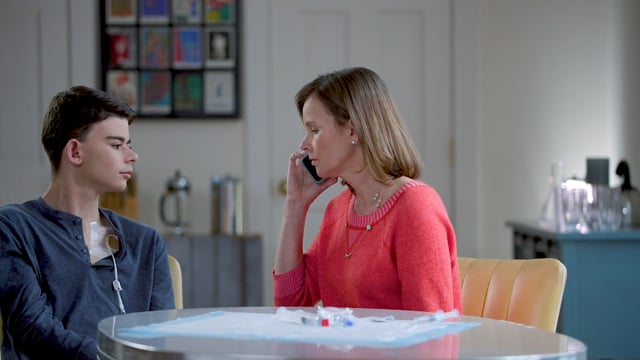Central Lines (Central Venous Catheters)
What Are Central Lines?
A central line (or central venous catheter) is like an intravenous (IV) line. But it is much longer than a regular IV and goes all the way up to a vein near the heart or just inside the heart.
A patient can get medicine, fluids, blood, or nutrition through a central line. It also can be used to draw blood.
What Are the Types of Central Lines?
Commonly used central lines include:
- implanted ports
- tunneled central lines (also called external central lines)
- PICC (peripherally inserted central catheter) lines
-

Getting a Central Line
Find out what to expect when your child needs a central line.
When Are Central Lines Used Instead of Regular IV Lines?
Doctors might use a central line instead of a regular IV line because:
- It can stay in place longer (up to a year or even more).
- It makes it easier to draw blood.
- Patients can get large amounts of fluids or medicines (like chemotherapy) that might not go through regular IVs.
Doctors may place a central line for someone who:
- has a serious infection so they can get IV for a few weeks
- has cancer so they can get chemotherapy and blood tests through the line
- needs IV nutrition
- will need many blood transfusions

Are There Risks to a Central Line?
Most of the time, central lines do not cause any problems. If problems do happen, it is usually because the line gets infected or stops working. Very rarely, a central line can cause a blood clot. Doctors review the risks with families before placing the central line.
How Can Parents Help?
If your child has a central line, you can help care for it to prevent infection and keep it working well. It's normal to feel a little bit nervous caring for the central line at first, but soon you'll feel more comfortable. You'll get supplies to use at home, and a visiting nurse may come to help you when you first get home.
Before your child goes home from having the central line placed, ask your health care team:
- how often to change the dressing
- when and how to flush the line
- what to do if the line gets blocked or comes out
- how to give medicines through the central line (if you will be giving medicines at home)
- if the line has caps, how often to change them
- which physical activities are OK for your child (most kids need to avoid rough play and contact sports)
- if any special care is needed to protect the central line while your child bathes
- what signs of infection to watch for
Tell your child's teachers, school nurse, counselor, and physical education teacher about the central line. They can make sure your child avoids any activities that may damage the line, and help support your child during treatment.


